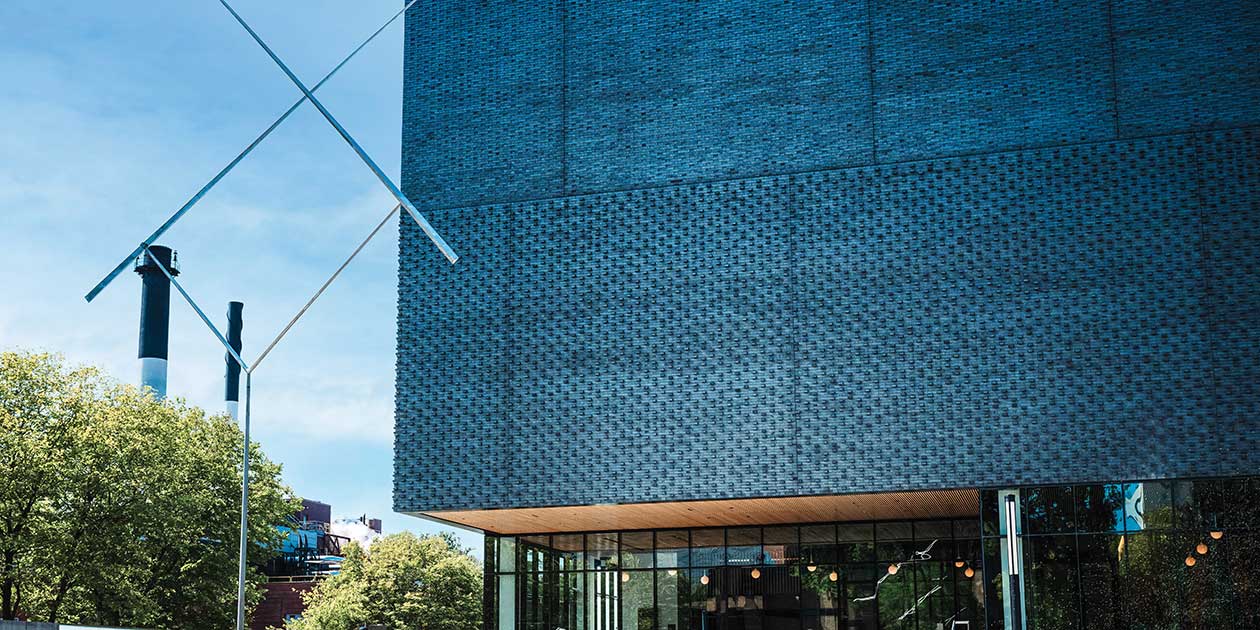Literary Greats Find Inspiration at UI Stanley Museum of Art
Using a work of visual art for literary creation—a writing approach known as ekphrasis—has the power to not only make a painting or sculpture more understandable, but also to allow viewers to see their own life’s journey within the artwork. The poem “Öklid Dışı Uzay Tehlikelidir” (“Non-Euclidian Space Is Dangerous”) by Turkish writer Efe Duyan does just that. Written in response to George Rickey’s Two Lines Oblique, a stainless-steel sculpture that fronts the new University of Iowa Stanley Museum of Art, the love poem is inspired by the story of how Duyan met his future wife when he was a 2019 fellow at the UI’s International Writing Program.
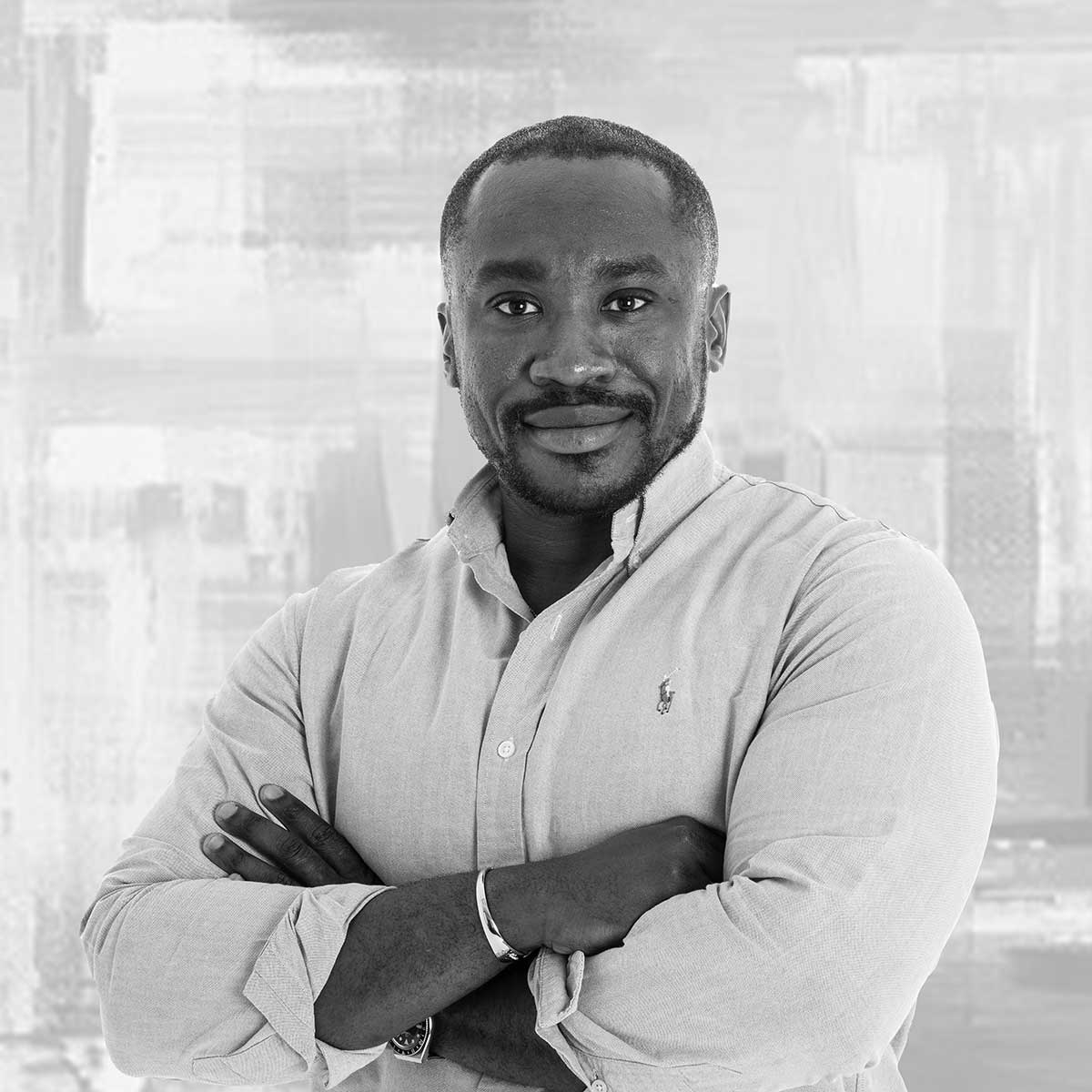 PHOTO: JASON SMITH
Derek Nnuro (16MFA), a graduate of the Iowa Writers’ Workshop and author of What Napoleon Couldn’t Do: A Novel (one of Barack Obama’s 2023 Summer Reading List picks), is the curator of special projects at the University of Iowa Stanley Museum of Art. He served as the editor for In a Time of Witness.
PHOTO: JASON SMITH
Derek Nnuro (16MFA), a graduate of the Iowa Writers’ Workshop and author of What Napoleon Couldn’t Do: A Novel (one of Barack Obama’s 2023 Summer Reading List picks), is the curator of special projects at the University of Iowa Stanley Museum of Art. He served as the editor for In a Time of Witness.
Duyan’s ekphrasis—equal parts ode to Iowa City and, of course, romance—is the opening piece of In a Time of Witness, a new book that the Stanley publishes in September and that is being distributed by UI Press in a partnership with Iowa’s renowned writing programs. Beyond a traditional museum exhibition catalogue, this unprecedented interdisciplinary project features 31 writers—alumni of the Iowa Writers’ Workshop, International Writing Program, and Literary Translation Program—who contributed original literary responses to artworks they chose from the Stanley’s permanent collection.
These writers are among the most celebrated of our time, including former U.S. poet laureates Rita Dove (77MFA, 22LHD), Joy Harjo (78MFA), and Juan Felipe Herrera (90MFA); and groundbreaking fiction writers like Adam Haslett (99MFA), Carmen Maria Machado (12MFA), and Yiyun Li (00MS, 05MFA). Iowa Writers’ Workshop professor emerita Marilynne Robinson (17LHD) writes the foreword.
Since opening its doors last fall, the Stanley Museum of Art has quickly established itself as a premier hub for cross-disciplinary activity on campus. Thirty departments and programs have made 175 class visits to the museum, including students from dermatology, management and entrepreneurship, nursing, and music. Museum director Lauren Lessing, believing art to be a catalyst, is committed to nurturing a museum environment that supports creativity, innovation, and discovery across disciplines. Lessing’s vision has its origins in the “Iowa Idea”—when UI visionaries in the 1920s unified studio arts with the study of art history and theory—and Iowa’s proud literary tradition.
“When university president Walter Jessup (34LITTD) and graduate dean Carl Seashore (27BSAS) brought artists and scholars together to create the first graduate degree programs in the arts anywhere in the world—the UI’s twin MFA programs in studio art and creative writing,” says Lessing, “they understood that art enables new perceptions, hones our ability to think critically, and opens a world of possibilities.”
Eleven poets and 10 fiction writers make up the Iowa Writers’ Workshop alumni featured in the book. Alumni of the International Writing Program include three poets and two fiction writers who contribute in Yoruba, Turkish, German, Argentine Spanish, and Japanese. Through their respective English translations, five writers—an Iowa Writers’ Workshop alum, director of translation, and translation alumni—add another layer of response and interpretation.
Aron Aji, director of translation programs at UI, translated Duyan’s poem from the Turkish to English. Duyan captures Iowa City—and more specifically, the UI—as one of its realities: an abundant, flora-marked global haven, where a Turkish writer can—and does—meet the love of his life, a Latvian writer. Rickey’s Two Lines Oblique, a pioneer of kinetic sculpture in which two balanced arms twist and spin effortlessly in the wind, catalyzes a meditation on the free flow of budding love and inventiveness that marks the UI’s ethos.
At its core, In a Time of Witness is a celebration of this ethos. The catalogue’s distinctiveness embodies the UI’s storied history of innovative arts and humanities education. The book also proudly celebrates the UI’s long history as a home for diverse artistic voices by highlighting alumni whose literary practice centers lived experiences of Black, Indigenous, and people of color, LGBTQIA+, and economically underserved communities. In these ways, In a Time of Witness is quintessentially Hawkeye.
Framing a Story
More than 30 of Iowa’s esteemed writers and translators took inspiration from the collection of the UI Stanley Museum of Art for the new exhibition catalogue, In a Time of Witness. They responded to works by renowned UI artists like alumnae Elizabeth Catlett (40MFA) and Ana Mendieta (69BA, 72MA, 77MFA) and former professors Hans Breder and Grant Wood; as well as to Stanley masterpieces such as Max Beckmann’s “Karneval,” Henri Matisse’s “Blue Interior with Two Girls,” and Andy Warhol’s “Mick Jagger.” Here are a few UI faculty and alumni whose works are featured in the In a Time of Witness project:
- Iowa Writers’ Workshop faculty members including Lan Samantha Chang (93MFA), Mark Levine (90MFA), Carmen Maria Machado (12MFA), and Marilynne Robinson (17LHD)
- IWW poets including Rita Dove (77MFA, 22LHD), Joy Harjo (78MFA), and Juan Felipe Herrera (90MFA)
- IWW fiction writers including Tameka Cage Conley (18MFA), Adam Haslett (99MFA), and Yiyun Li (00MS, 05MFA)
- International Writing Program participants including Turkish poet Efe Duyan, Japanese novelist Minae Mizumura, and Argentine writer Pola Oloixarac
- Translation Workshop literary translators including Aron Aji, director of translation programs
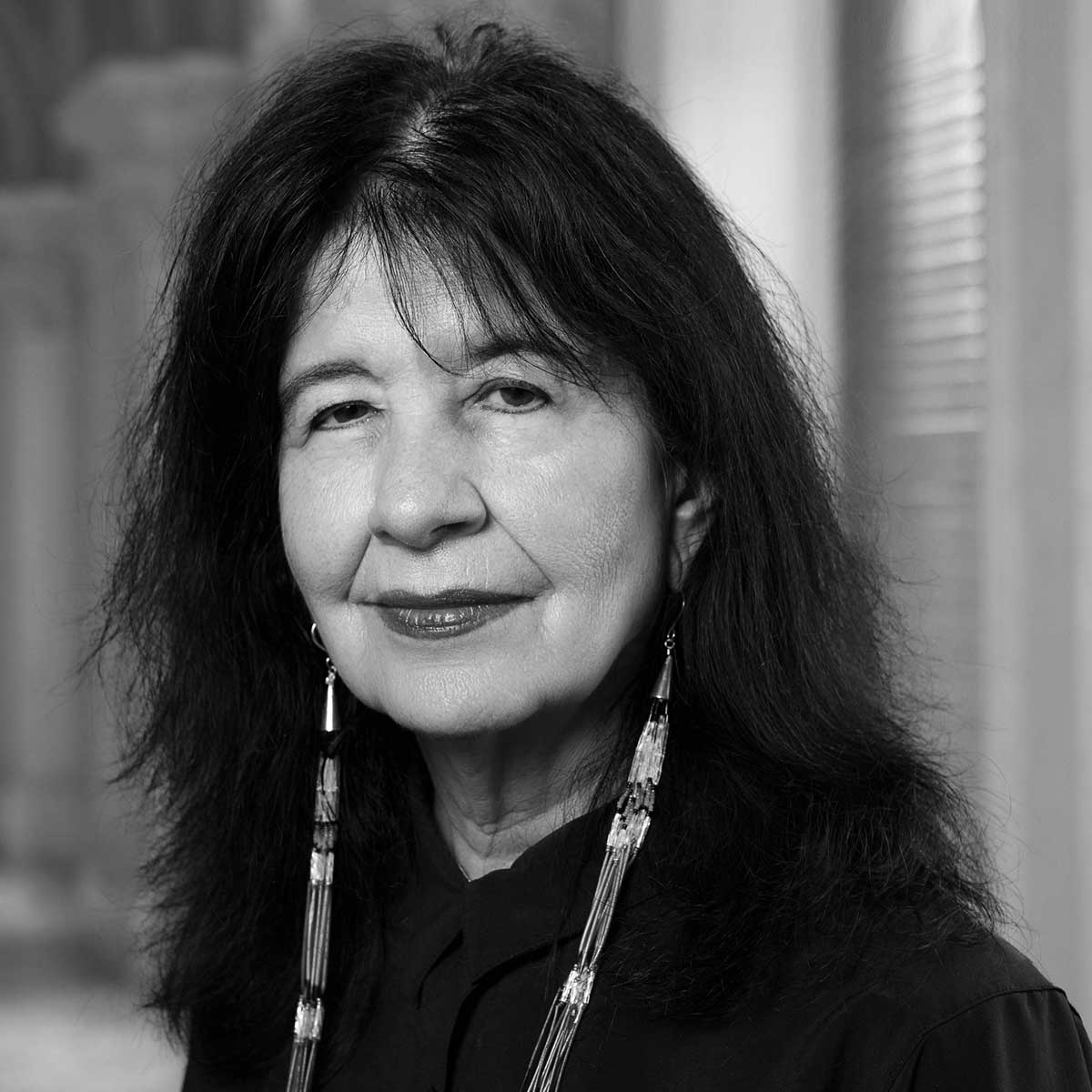 PHOTO: SHAWN MILLER/LIBRARY OF CONGRESS
PHOTO: SHAWN MILLER/LIBRARY OF CONGRESS
“History parades beneath the clouds up there. Ancestors live in the shine of star shadow,
Their homes and horses a mirror of down here,
This land that never belonged to anyone.”
—Joy Harjo (78MFA), the first Native American U.S. poet laureate, in “A Country on Your Shoulders,” a response to American Indian No. 4 by Fritz Scholder
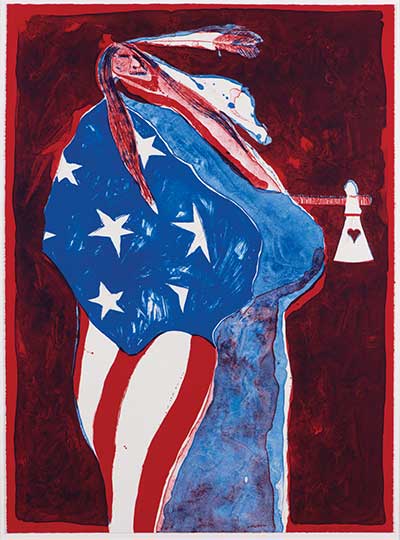 Fritz Scholder (Payómkawichum [Luiseño], 1937–2005), American Indian No. 4, 1972. Lithograph on paper, 30 1/8 × 22 1/8 in. (76.5 × 56.2 cm). Stanley Museum of Art, Gift of Lloyd E. Rigler, 1981.276. © Estate of Fritz Scholder
Fritz Scholder (Payómkawichum [Luiseño], 1937–2005), American Indian No. 4, 1972. Lithograph on paper, 30 1/8 × 22 1/8 in. (76.5 × 56.2 cm). Stanley Museum of Art, Gift of Lloyd E. Rigler, 1981.276. © Estate of Fritz Scholder
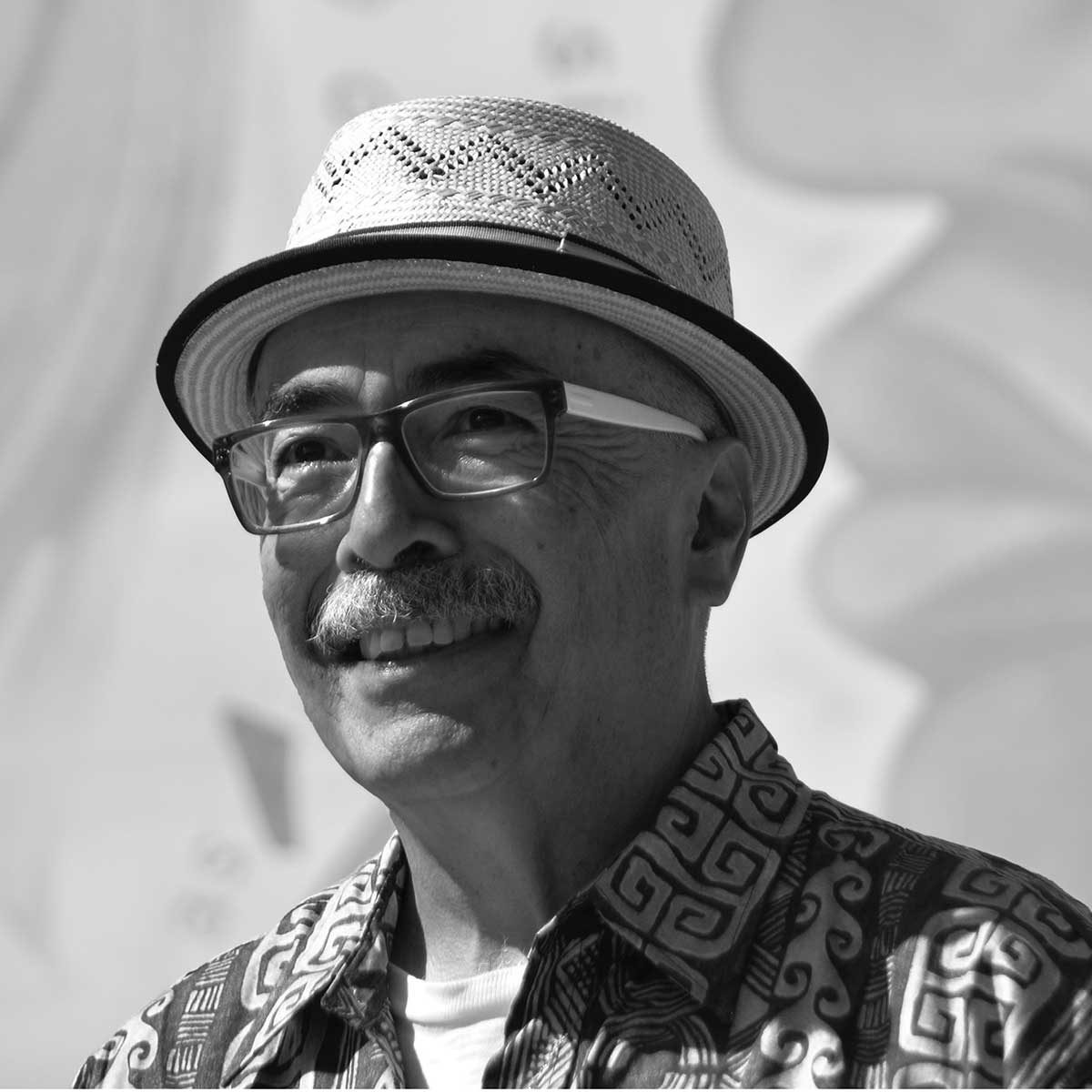 PHOTO: CARLOS PUMADOVE
PHOTO: CARLOS PUMADOVE
“Heat life lives in humanity experiment come to you we burst
Across lands & skyscrapers dripping machine particles”
—U.S. poet laureate Juan Felipe Herrera (90MFA) in “Future Forms Future Worlds,” a response to Jackson Pollock’s Mural
 Jackson Pollock (American, 1912–1956), Mural, 1943. Oil and casein on canvas, 95 3/8 × 237 3/4 × 2 1/2 in. (242.3 × 603.9 × 6.4 cm). Stanley Museum of Art, Gift of Peggy Guggenheim, 1959.6
Jackson Pollock (American, 1912–1956), Mural, 1943. Oil and casein on canvas, 95 3/8 × 237 3/4 × 2 1/2 in. (242.3 × 603.9 × 6.4 cm). Stanley Museum of Art, Gift of Peggy Guggenheim, 1959.6
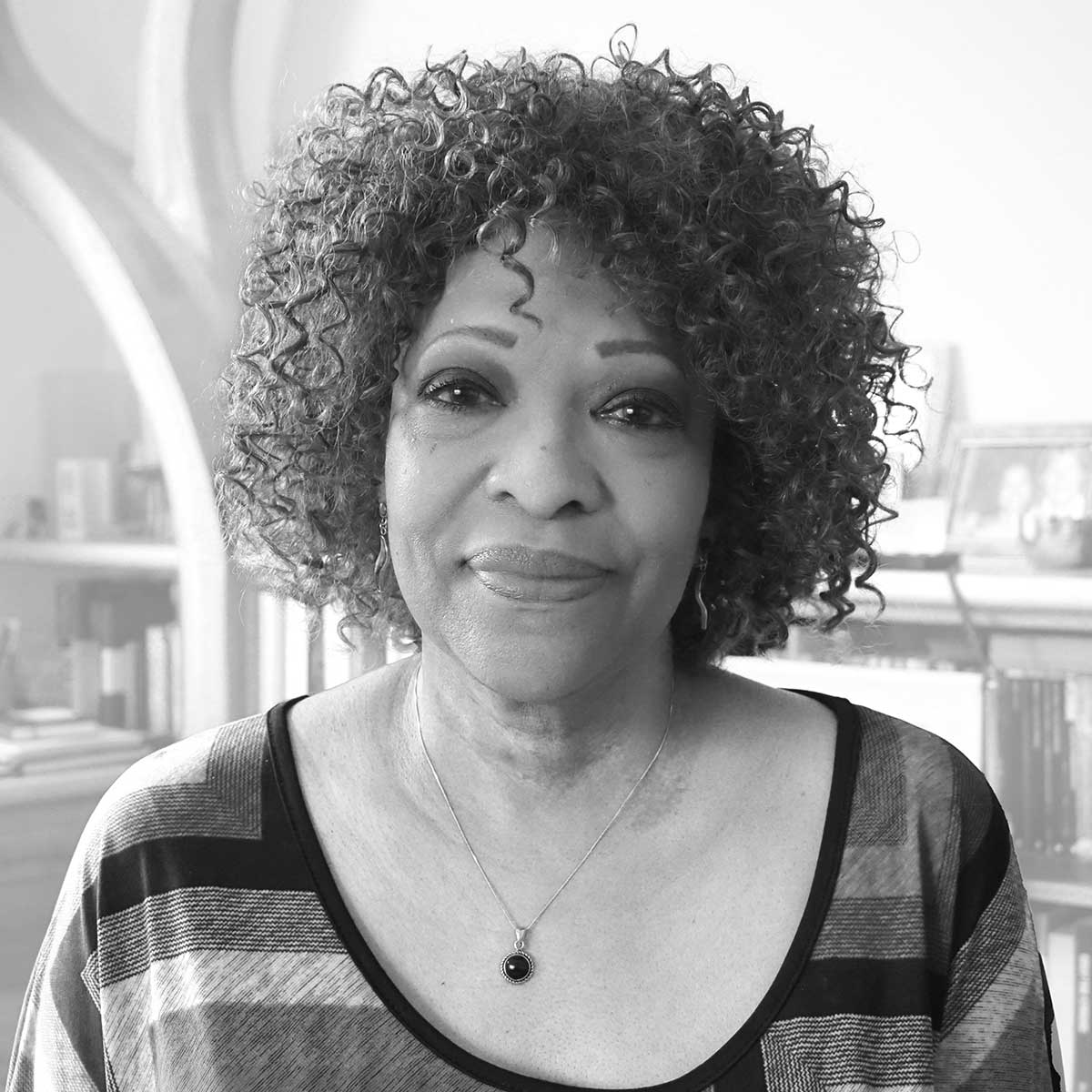 PHOTO COURTESY RITA DOVE
PHOTO COURTESY RITA DOVE
“Look at that yellow, falling all over itself,
laying down tracks as if to say There’s no
law against being beautiful and bodacious;
leave your laps on their sofas and come out dancing!”
—U.S. poet laureate and Pulitzer Prize recipient Rita Dove (77MFA, 22LHD) in “Yellow Embracing Spring,” a response to Spring Embraces Yellow by Alma W. Thomas
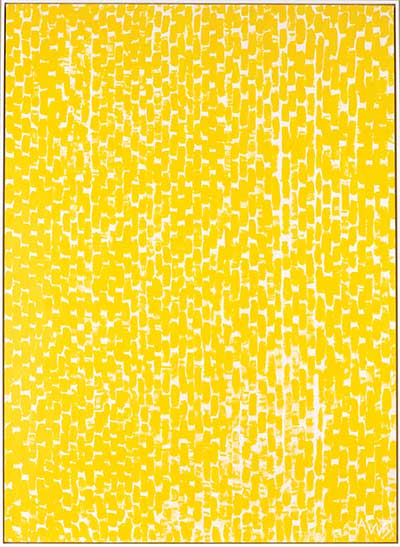 Alma W. Thomas (American, 1891–1978), Spring Embraces Yellow, 1973. Acrylic on canvas, 68 × 52 in. (172.7 × 132.1 cm). Stanley Museum of Art, Gift of Vincent Melzac, 1975.103. © 2023 Estate of Alma Thomas / Artists Rights Society (ARS), New York
Alma W. Thomas (American, 1891–1978), Spring Embraces Yellow, 1973. Acrylic on canvas, 68 × 52 in. (172.7 × 132.1 cm). Stanley Museum of Art, Gift of Vincent Melzac, 1975.103. © 2023 Estate of Alma Thomas / Artists Rights Society (ARS), New York


